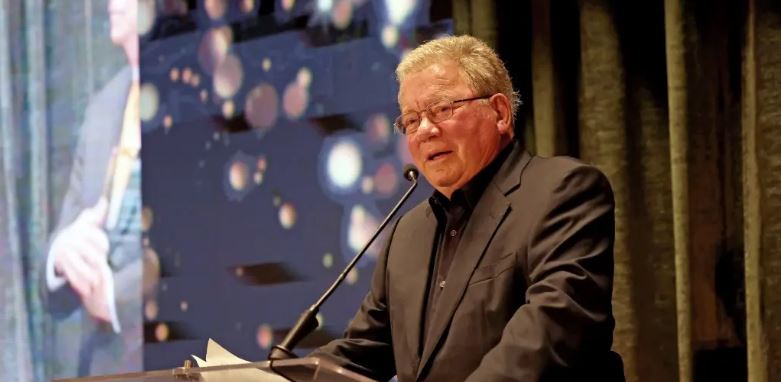William Shatner describes going to space: “everything I had thought was wrong”. William Shatner had mixed feelings about his trip to space.
William Shatner has made a career out of outer space. But though he starred as the space-roving Captain Kirk in Star Trek, he had never actually left planet earth until last year. In 2021, Amazon CEO Jeff Bezos invited the 90-year-old to voyage into space in the Blue Origin space shuttle, and Shatner became the oldest person to ever go into space.
Shatner now has a new book coming out, Boldly Go: Reflections on a Life of Awe and Wonder, and in it he describes the experience of traveling into space. An excerpt of the forthcoming book has been released via Variety, and it seems like the trip was more stressful than anyone had previously let on.

According to Shatner, he was so nervous about the voyage that he almost cancelled, but didn’t because he was “a professional” and felt “the show had to go on.” These fears reemerged when as the shuttle was about to lift off, the pilot made an announcement about a “slight anomaly in the engine.”
Apparently, however, the “anomaly wasn’t too concerning, because thirty seconds later, we were cleared for launch.” Shatner describes the disconcerting feeling of lifting off: “At two g’s, I tried to raise my arm, and could barely do so. At three g’s, I felt my face being pushed down into my seat.”
Once the shuttle finally finished its ascent, Shatner says being in space wasn’t what one would expect. “Everything I had thought was wrong,” he wrote. “Everything I had expected to see was wrong.”
Apparently, seeing earth from afar didn’t feel great to Captain Kirk. “It was among the strongest feelings of grief I have ever encountered,” he said. “The contrast between the vicious coldness of space and the warm nurturing of Earth below filled me with overwhelming sadness.”
According to Shatner, this isn’t an uncommon feeling, and this sadness is called the “Overview Effect.” “Essentially, when someone travels to space and views Earth from orbit, a sense of the planet’s fragility takes hold in an ineffable, instinctive manner,” Shatner explained.
So if you’re about to shell out tens of thousands of dollars to enter space, make sure you’re ready for a crushing, existential sadness.

What does William Shatner suffer from?
William Shatner — who is best known for playing Captain James Kirk on the television series Star Trek —has frequently and candidly shared his experiences dealing with a severe case of tinnitus, PER Treble Health.
Tinnitus is a condition (technically classified as a symptom, not a disease) that manifests as a bothersome ringing in the ears. It affects millions of people each year and typically emerges in the wake of loud noise exposure, head/upper neck trauma, or age-related hearing loss. That said, while most kinds of tinnitus are related to the inner ear malfunctioning, it is still possible for someone to have a hearing in the normal range and still suffer from tinnitus.
According to Shatner, his tinnitus began after standing too close to a special effects explosion while filming the Star Trek episode “Arena”. He reported feelings of agony and torment until he sought treatment. Shatner has described his tinnitus as sounding like television static. While he previously struggled with it in decades past, he has now reached a point where he is no longer bothered by it, similar to other patients who have successfully “habituated”. Shatner has also shared his experience with visiting an audiologist and becoming emotional when they were able to replicate the sound of his tinnitus and tailor a personalized therapy plan for him.
Tinnitus Retraining Therapy (TRT) is the most reliable tinnitus treatment available. It typically involves managing stressors, cultivating wellness, and following various sound therapy and cognitive behavioral protocols. The course of TRT is variable and can take from 6 to 18 months. It is also important to consider that no matter how far you might be in your tinnitus habituation journey, there is still time to start the recovery and management process.







